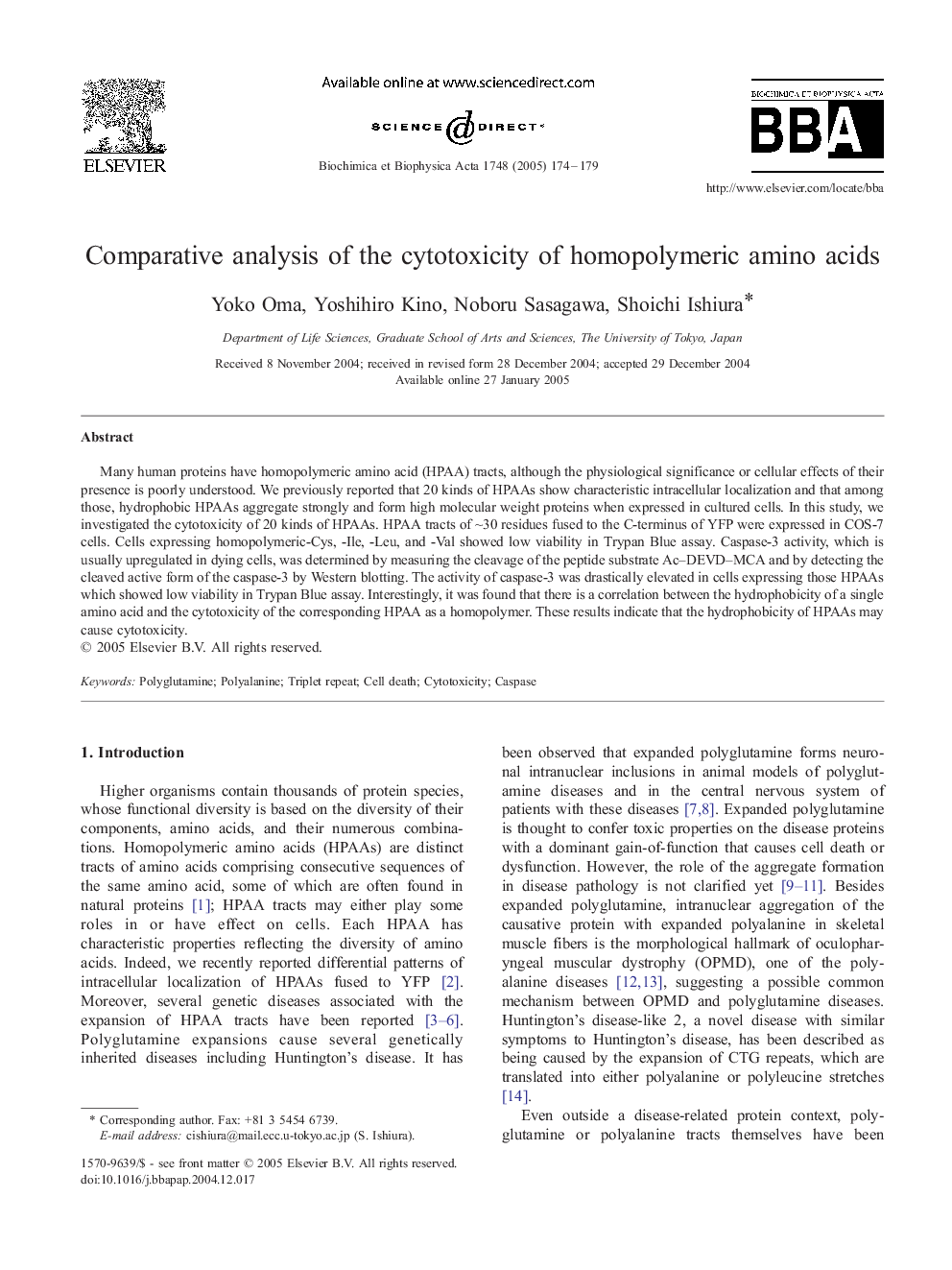| Article ID | Journal | Published Year | Pages | File Type |
|---|---|---|---|---|
| 10537345 | Biochimica et Biophysica Acta (BBA) - Proteins and Proteomics | 2005 | 6 Pages |
Abstract
Many human proteins have homopolymeric amino acid (HPAA) tracts, although the physiological significance or cellular effects of their presence is poorly understood. We previously reported that 20 kinds of HPAAs show characteristic intracellular localization and that among those, hydrophobic HPAAs aggregate strongly and form high molecular weight proteins when expressed in cultured cells. In this study, we investigated the cytotoxicity of 20 kinds of HPAAs. HPAA tracts of â¼30 residues fused to the C-terminus of YFP were expressed in COS-7 cells. Cells expressing homopolymeric-Cys, -Ile, -Leu, and -Val showed low viability in Trypan Blue assay. Caspase-3 activity, which is usually upregulated in dying cells, was determined by measuring the cleavage of the peptide substrate Ac-DEVD-MCA and by detecting the cleaved active form of the caspase-3 by Western blotting. The activity of caspase-3 was drastically elevated in cells expressing those HPAAs which showed low viability in Trypan Blue assay. Interestingly, it was found that there is a correlation between the hydrophobicity of a single amino acid and the cytotoxicity of the corresponding HPAA as a homopolymer. These results indicate that the hydrophobicity of HPAAs may cause cytotoxicity.
Related Topics
Physical Sciences and Engineering
Chemistry
Analytical Chemistry
Authors
Yoko Oma, Yoshihiro Kino, Noboru Sasagawa, Shoichi Ishiura,
